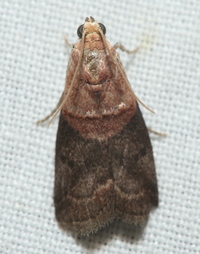« |
Home |  » » |
| View PDF | Pyralidae Members: | Acrobasis Members: | 6 NC Records |
|---|
Acrobasis caryalbella Ely, 1913 - No Common Name |
 |
Photo Gallery for Acrobasis caryalbella - None | Photos: 5 |
| Moths of North Carolina |
« |
Home |  » » |
| View PDF | Pyralidae Members: | Acrobasis Members: | 6 NC Records |
|---|
Acrobasis caryalbella Ely, 1913 - No Common Name |
 |
Photo Gallery for Acrobasis caryalbella - None | Photos: 5 |